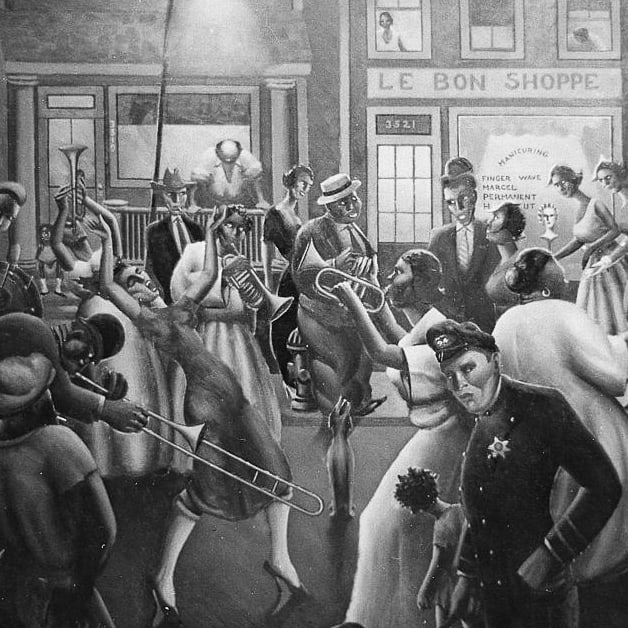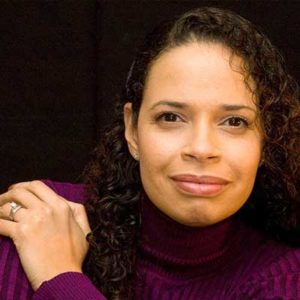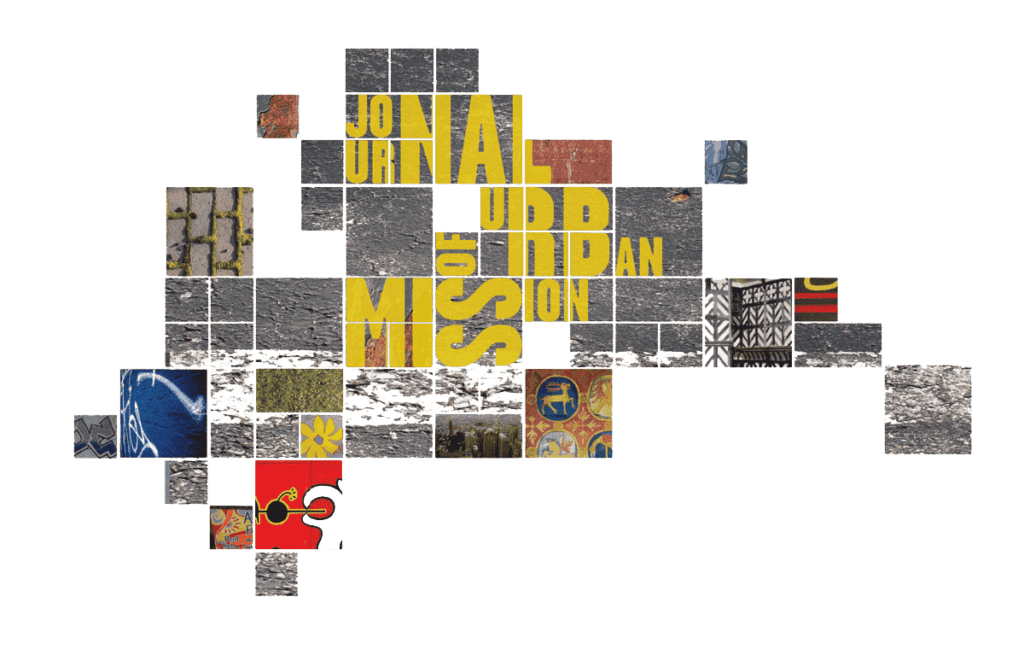For many Christians from subdominant cultures operating within the context of a dominant society, God’s sovereignty over our physical characteristics is challenged daily by media and deeply embedded social attitudes that determine what is “ideal beauty.” In mentoring Christians (particularly Christian women), we must acknowledge the constant barrage of media messages that not only challenge but deride God’s design of facial features, eye shape, skin tone, hair texture, and culturally accepted body types.
Identity Dissonance vs. Identity Satisfaction
The dominant culture of any society often sets its own image as the aesthetic ideal for beauty. The plastic surgery, advertising, hair and cosmetic industries are multi-billion dollar testaments to the lucrative power of manipulating and perpetuating what I have termed identity dissonance, encouraging those in the subdominant cultures toward drastic and self-mutilating practices to conform to the dominant culture’s aesthetic standard. Identity dissonance includes (but is not limited to) dissatisfaction with, alienation from, or confusion about one’s identity as intentionally designed by a transcendent Creator.
Although John’s revelation lists a glorified celebration of variety in Revelation 7:9, some well-intentioned Christians feel that looking past racial differences will solve this dissonance. Such attempts to erase our individual specificities only dismiss the subdominant culture’s reality. This position is problematic, because (1) it denies God-ordained personal characteristics, (2) it hinders a person’s ability to function within the dominant culture and (3) it discounts the redemptive potential of God’s design. Denying of the immutable reality of a person’s physical being, whether such denial comes from an external source or from within the self, is its own forms of oppression.
Consider: if the Psalmist had said “I choose not to see the sun, the stars, the moon or the heavens … it’s all just universe”, there would be no Psalm 19 that evidences the handiwork of God (Psalm 19, Romans 1:19). Acknowledging the Bible’s celebration of diversity in nature while denying the variations of his handiwork in people seems inconsistent.
Consider: if the Psalmist had said “I choose not to see the sun, the stars, the moon or the heavens … it’s all just universe”, there would be no Psalm 19 that evidences the handiwork of God (Psalm 19, Romans 1:19). Acknowledging the Bible’s celebration of diversity in nature while denying the variations of his handiwork in people seems inconsistent. The Creator has seen to it that nothing can alter or erase the evidence of an individual’s created identity; our DNA remains as God’s immutable marker proclaiming the specificity of our physical design. In other words, if any of my physical attributes should be altered, whether through illness, accident, or through medical or cosmetic manipulation, my genes will still bear identifying markers of my physical characteristics. According to recent research that changes decades of thought in the area of genetics, our design is so specific that not even identical twins bear identical DNA.1
Acknowledging the Sub-Dominant Cultural Reality
Much of Christian mentorship rightly focuses on the internal attributes that outwardly express God’s righteousness. Our nature cannot rightly be discussed independent of our internal transformation by Christ; being conformed to his image is necessary for spiritual maturity, and the means of this transformation by the renewing of the mind (Romans 12:2). Dr. John Frame defines theology as “the application of Scripture by persons to every area of life.”2 Such an approach expands theology beyond the conceptual (a noun, something that is studied) to the active. Theology, when rendered as a verb, presents Scripture as taking on meaning as it is applied. A theological approach to addressing the subdominant reality must address both soul and body in the discipleship process, renewing how the mind considers the body from God’s perspective. Proper balance in such an application lies in focusing on a transcendent reference point–the Creator of all things temporal.
A Partially Raised Consciousness
Identity dissonance is not limited to the dominant/subdominant cultural interplay of American society. Identity dissonance finds its roots in idolatry, and since idolatry is sin, no one is exempt from this tendency. The phenomenon can be observed globally among varying tribes in African countries, among Asians cultures, among Latinos, in the European context, among “mixed-race” peoples, and beyond.
The Black Consciousness Movement in late 1960’s America, for example, was a positive movement in many respects as it moved attention away from the dominant culture’s aesthetic standard and offered a greater appreciation for cultural variation. Yet this consciousness-raising was incomplete in that it held no transcendent understanding (that is, an understanding outside of ourselves) as to why “Black is Beautiful.” Over the years since, African Americans, like many others globally who live in the culturally subdominant position, have struggled to reconcile the mirror’s image with cultural ideals.
Looking inward to understand our world or the self apart from Christ is idolatry (Genesis 3:1-8), the presumption that we can know and understand our dignity, identity and significance apart from God’s revelation of Himself (Romans 1:21-23).
Looking inward to understand our world or the self apart from Christ is idolatry (Genesis 3:1-8), the presumption that we can know and understand our dignity, identity and significance apart from God’s revelation of Himself (Romans 1:21-23). With our own reasoning as a starting point, we will always tend to think of ourselves with either greater or lesser import than is appropriate. Anything that is absolutized without God becomes an idol, subject to collapse with a propensity to oppress others. In other words, when we only focus inward, someone must be the ideal and someone must be less than that ideal.
The secular fallacy of “self-esteem” has simply led us in a circle back to the cultural shackle that binds us and oppresses others. We must first esteem the One in whose image we are made; then we aren’t merely “loving ourselves”, but learn to respect our features–and the features of others–as the intentional design of a transcendent Creator God who has made us for his kingdom purpose. We realize that no nose can ever be too broad or too keen, no eye too gray or brown, etc. When our identity is properly seated in the Creator and His intentions, even on a purely physical level all people can be appreciated as intentionally designed, with equal worth and significance. For this reason, we are free to value anew what we see both of ourselves in the mirror, and in others–we see beauty all around.
Identity Satisfaction Through Union with Christ
Though many early church fathers affirmed that the image of God in man doesn’t solely refer to the body, they still affirmed that the body and spirit are symbiotic pre- and post-fall, as well as in their glorified state. Reformer John Calvin attributed the glory of God to the whole person that “extends to the whole excellence by which man’s nature towers over all kinds of living creatures. Therefore, there was no part of man, not even the body itself, in which some sparks did not glow.”3 Augustine wrote that “for some mysterious reason … the soul needs the body” both in life and in glory.4 Theologian John Murray noted that man does not merely have a body, but that he is body; that “Scripture does not represent the soul or spirit of man as created first and the put into a body… the bodily is not an appendage.”5 The body and spirit connection is evident in both Adam and Christ. Like Adam, we currently exist in temporal bodies bearing a distorted image of God; like Adam, our physical bodies will be sown into the ground in unrighteousness; and like Christ who permanently assumed humanity, those in union with him will be resurrected in a perfected and glorified body fitted for the age to come. It is a stretch then to say that we can just dismiss the details and significance of the body. Whether on this side of glory or the next, a human soul is not a complete person without a body.
In his body both temporal and glorified, he stands among us and above us as Ultimate Man and Ultimate Ethnic; Christ is more Black, White, Yellow or Red than any of us will ever be.
Christ was identified as the coming Savior in part by his own human particularity. We may consider the significance of Christ’s total personhood here on earth–his race, gender, ethnicity, and the time and location of birth into a subdominant culture within the context of the Roman Empire. While the Bible tells us Christ was ethnically Jewish, it also tells us that He is the true and perfect human. As He gathers the nations to Himself, He stands as the perfect African-American, African, or European; the perfect Asian, Latin American, and so on with all ethnicities. As Creator and Lord of the nations and the only perfect participant among them, Christ identifies with each nation with such completeness, depth, and totality that only He is able to ultimately consummate and bring them into harmony. When we embrace his design as intentional in the temporal, we proleptically embrace Christ’s ingathering of all nations, tribes, peoples and tongues to worship around his glorified body on the throne. In his body both temporal and glorified, he stands among us and above us as Ultimate Man and Ultimate Ethnic; Christ is more Black, White, Yellow or Red than any of us will ever be.
In focusing on the aspects of both his temporal and glorified Person, we may develop a discipleship process that encourages not only appreciation of God’s design, but gives existential meaning to it. If those who follow Christ acknowledge that he is redeeming every area of life for his purpose, then they may ask of him in turn, “To what end and for what purpose was I given this particular body, shaped, colored and plumbed this way? What is the divine intention behind such specificity?” Only the Creator, through his revealed word and by his Spirit, can satisfactorily explain the totality of an individual’s kingdom-building purposes for such a particular time, place and space.
Integrated Mentorship
Voices that perpetuate identity dissonance rage through our global media outlets. Because of this, mentorship of those within the subdominant cultures must take into account both body and spirit. While addressing the ongoing sanctification of the “inner-man/woman,” disciples must simultaneously be imbued with the knowledge and affirmation that their physical being has been intentionally designed with great care. The diverse “packages” in which God has presented all peoples to the world are his intentional handiwork, and the appearance of each person contributes to our unique identity, voice and purpose.
In anticipation of our ultimate glorification in union with Christ, Christ-followers can appreciate the redemption of even their temporal design by the Creator and embrace it with thanksgiving, awe and reverence.
Though race itself is neither holy nor profane, it is sacred in its divinely-designed reality and must be respected. Upon Christ’s glorification, the kingdom of God will be established as the Pre-Eminent Culture, and all temporal man-made cultures will become equally subdominant. In anticipation of our ultimate glorification in union with Christ, Christ-followers can appreciate the redemption of even their temporal design by the Creator and embrace it with thanksgiving, awe and reverence.
In mentorship, distinctions should be wisely drawn from Scripture between bodily interventions that are corrective and constructive (for example, surgery for those with birth defects that move an individual toward life as a physically realized human being), and those that are destructive (idolatrously motivated distortions of God’s created design). If empowered with a holistic and wise application of Scripture to all areas of life, mentors may teach disciples that their design is worthy of more than media exploitation and the stimulation of commerce, while guiding them away from the idolatry that leads either to cultural exaltation or cultural doubt.
Notes
1 Anahad O’Connor, “The Claim: Identical Twins Have Identical DNA,” New York Times, March 8, 2008.
2 John Frame, Systematic Theology: God Glorifies His Lordship in Our Salvation, 2013, P&R Publishing Company, Phillipsburg, NJ, 18.
3 John Calvin, Institutes I.15.3.
4 Augustine, Literal Commentary on Genesis 12.35.68
5 John Murray, Collected Writings of John Murray. Vol. 2 (Edinburgh: Banner of Truth, 1977), 14.



3 thoughts on “Identity Satisfaction in a World of Cultural Dissonance”
This is a remarkable article. Why are we each different? I’ve wished I were taller, hence harder to ignore! But there is something unique about each of us, within a unique group, which is God-given and remarkable. Give us more, Karen! DCD
What a wonderful article. Not only the notion of human uniqueness, but the ultimacy of God’s Kingdom over human culture – spot on! Loved the illustrations too. I’d like the opportunity to study with this woman some day 🙂
Blessings, Bill & Barb
Heb. 1:3 Amp. “He is the out-raying of the divine.” Perhaps we are those rays, each ray a spectrum of the Light, His Body, broken, expressing the color, the beauty, the glory that makes up the whole of Light. You’re so right, we need mentors to remind us of who we are and Whose we are. We need community to help us celebrate race, culture, personality, physical attributes, gifts. We need the entire Body to adequately express Christ the Light to a dark world. Thank you, Karen, for so eloquently reminding us.